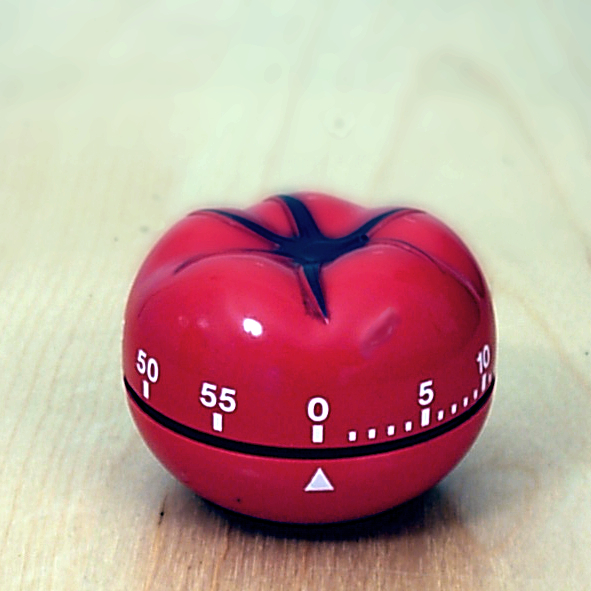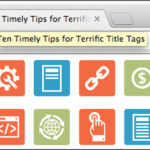Does your website have an absence of something? Perhaps you post often but your articles aren’t gaining a good number of shares or comments. It feels as though no one is reading them. The thing that you really need here is pillar content, also referred to as evergreen or cornerstone content. When you create any pillar article, be sure about what aim you would like to achieve with it. Do not just create an article without any direction or purpose.
Developing the Title
Although some bloggers create their title after publishing their articles, it’s recommended to produce a name before beginning on your own post. If you simply have a title in your mind, it may be difficult to work out how best to frame your article, or what to add in it. So be sure about your title:
- Be very clear. What your article is about.
- Be to the point. What does your article cover?
- Create interest. Adjectives are good for that – “Five Simple Tips” or “Five Effective Tips” relatively than just “Five tips”.
- Not contain hyped things. If your article titled “Five Insider Techniques for the Professionals” is fairly hyped up, then it can get visitor clicks but viewers will not stay for long.
Framing the Article
One crucial aspect of publishing that numerous bloggers battle is really a structure. If your articles are badly organized, they’ll not merely be difficult to create, but also will be difficult to read. Listed here is a fundamental framework of an article:
Introduction
#1: Subheading
Content
#2: Subheading
Content
… To be continued until …
Wrapping Up
Publishing an Initial Draft
Intend to produce your articles between 600 and 1,500 words. If they are below 600, it will be difficult for you to produce anything actually valuable. If they are above 1,500, you’ll battle to keep the article coherent and organized. Listed here is how to truly get your first draft published:
- Approach first. Be sure you have a definite framework in place. That may suggest listing down all ideas, or applying from among the ready-made ideas.
 Prevent distractions. Publishing requires plenty of energy & focus; therefore use the Pomodoro Technique or related to creating an article in the breaks.
Prevent distractions. Publishing requires plenty of energy & focus; therefore use the Pomodoro Technique or related to creating an article in the breaks.- Do not get stuck in between to make it perfect. You have got the maximum amount of time to revise, therefore do not fear if a phrase has turned out unusual, or you are lacking a bit of critical information. Just exercise yourself ahead in your post.
- Leap straightaway with your first important section or point. This should be done as opposed to starting from the beginning of an introduction. After you have published the article, it will be simpler to produce an introduction that is apt.
- Envision that you are publishing an email to your close friend. What guidance can you provide? How will you create it? Make use of this foundation when writing a post.
Modifying the Details
After you are pleased that the article includes the best data, it’s time to let every sentence draw its weight. At this degree of modification, you should look for:
- Phrases or words that you have overused. If you utilize a certain term on five different occasions in a sentence, then it will look as if you are following an SEO keyword-stuffing practice, a deadly SEO sin.
- Phrases that appear oddly. Possibly it seemed proper in your mind, but appears a little strange on the page. It’s recommended to read your article out loud – this may actually allow you to track any uncomfortable bits.
- Punctuation problems and typos. Mark anything that your spell checker shows up, and additionally search out for standard spelling or punctuation mistakes.
Formatting the Article
Appearance is extremely important. You might create a fantastic, helpful, interesting article that does not get viewers only because it seems difficult to read. When you yourself have extended paragraphs in a tiny font, viewers may not take the trouble of seeing your article at all.
- Subheadings. This breaks your article into easy-to-read pieces, and support viewers discover data that they are skimming for.
- The text highlighted with bold. That is a superb solution to put in the spotlight the crucial points. Do not overdo it, or it may start to appear distracted or look untidy. Intend to highlight full sentences with bold, as opposed to only phrases or words.
- The text highlighted with italics. They are helpful for international phrases, personal phrases that you wish to stress upon, or out of the flow phrases that you would like in an alternative font.
- Bullets. List wise structuring has an additional white place enabling quick readability. This helps in using both numbered or unnumbered bullet points.
- Small paragraphs. Among the easiest methods to let your articles be more understandable is always to split the article in extended paragraphs. If you have written beyond four lines, then consider breaking the paragraph.
Putting the Pictures
 Pictures seize our attention. They entice our eyes, and provide the convenience of reading the post in an interesting manner. In short, they deliver a qualified & finished experience on your website. For getting pictures you have got varied options like:
Pictures seize our attention. They entice our eyes, and provide the convenience of reading the post in an interesting manner. In short, they deliver a qualified & finished experience on your website. For getting pictures you have got varied options like:
- Your personal photography. If you have a powerful blogging style or if you wish to construct a greater relationship with your visitors, give it a try.
- Stock pictures. There are lots of websites that sell you the pictures you need to use for your website. That is not a low priced alternative, but when you are publishing an article that really needs to appear good, maybe it has its value .
- Free Flickr images. Plenty of artists exhibit their work on Flickr, which you are able to use, by scanning the “Creative Commons” category.
Receiving and Applying Feedback
It is possible to enhance your website if you have got feedback. A great way to get this done would be to question anyone to study your draft article, and encourage them to let you know how they believe you might enhance your article. For this purpose, the best visitors to take into consideration are:
- Other bloggers who realize the medium.
- Clever visitors who’ve been following your website for some time now.
- Do not target the best bloggers related to your market and request them a feedback, as they will hardly have any time to provide their valuable response.
Marketing your article
Your article is now ready for the entire world, but your work is not finished yet. If you have an enormous market, just “publishing” will not be enough to bring plenty of visitors to your post. There are lots of methods to promote your article:
- Integrate your article with Twitter. While you will find plugins that auto-tweet your threads, it is always advisable to have a customized tweet every time on Twitter.
- Integrate your article with Facebook. You might want to include a quick blurb with regard to your article, or question a concern to inspire comments on the page that you have created in Facebook.
- Encapsulate your article in your newsletter. Not all newsletter subscribers sign up for your website, therefore put hyperlinks to your posts in the newsletter round-up.
- A blogging friend should be contacted for connecting to your post. Don’t mail the utmost top bloggers in your market. Instead, pick those with whom you have a connection.
- Connect to your article from your own sidebar. Several bloggers have a widget of “Popular Posts” or “Recommended Posts” to highlight their finest content. Some actually develop eye-catching picture banners to have a URL leading to their most useful posts.
- Get back to previous threads and URL to the newest one. When you have an older article on the same subject, will you want to URL ahead? Register with Google Analytics to see which of your past posts are receiving probably the most search engine traffic.
- Connect to your article from a guest post that you created on another blog. If you create a guest post simply for the benefit of hyperlinks, it might not be effectively accepted. Just set a URL in the body of the article only if it’s really relevant.
Addressing the Comments
After your article is published, put aside your time and energy to acknowledge comments. Plenty of visitors who don’t post a comment can, however, search down and go through the comments area, which actually matters making it a crucial portion of one’s post.
- Answer all comments. There’s no need not to provide an answer immediately to each comment, but if it stays unanswered for a long time it does not deliver a good impression to the new readers.
- Eliminate spam comments. It’s recommended to behave immediately in eliminating any spam that gets through in the form of comments. It’s also important to get rid of any unpleasant comments.
The Ultimate Plan
What matters most is the hands on caliber to produce pillar articles for the website – and here is an easy ultimate plan for carrying it out:
- Strategize your post.
- If you get caught at any stage, envision you are responding to a comment or emailing to at least one of your visitors – behave like you are speaking right to them.
- Reduce any adding of new sections, rearranged paragraphs & tangents, if necessary.
- Look out for language loopholes, grammatical mistakes & typos.
Obviously, some pillar content will need a little more than those stages. An A-Z article, as an example, may effectively consume an hour or so just to strategize, and an article that involves plenty of specialist opinions can include a lot of waiting & emailing in relation to the responses.
image credit: vc2plus.com, wikipedia.org









Comments are closed.